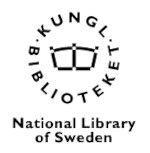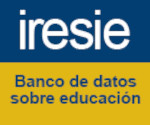Audience Engagement through University Programmes. A Case Study of Opera in Bilbao
DOI:
https://doi.org/10.5020/23590777.rs.v19i1.e7615Palavras-chave:
arts, cultural audiences, opera, education, university, older adults.Resumo
The purpose of this research was to explore how university programmes for older adults can contribute to the engagement of cultural audiences. To achieve this aim, a qualitative research approach was employed. The university programme for older adults called “Enjoy the arts”, organised by the University of Deusto (Bilbao, Spain), was taken as a case study and an analysis of in-depth interviews with 10 participating students was conducted. We focused our interviews on the opera experiences of our interviewees before and after participating in the university programme, and aimed to capture the following changes produced: (a) changes in the duration of the opera experience; (b) changes in the intensity of the opera experience; and (c) changes in the individual. We conclude that university programmes for older adults can contribute to the engagement of cultural audiences by facilitating a path to the enjoyment of cultural experiences, transforming them into high-quality arts experiences. Due to the limited number of interviews, this paper should be considered as an exploratory research that could inspire cultural managers in their practice or that could be the seed for an advanced research.Downloads
Referências
Asociación Estatal de Programas Universitarios para Mayores. (2011). Aprendizaje a lo largo de la vida, envejecimiento activo y cooperación internacional en los programas universitarios para mayores. IV Congreso Iberoamericano de Universidades para Mayores (CIUUMM). Murcia.
Amigo, M. L., & Cuenca-Amigo, M. (2014). La educación del ocio estético en los museos. El caso del Museo Thyssen Bornemisza de Madrid. Revista de Ciencias de la Educación, (240), 399-420.
Amigo, M. L. (2014). Ocio estético valioso. Bilbao: University of Deusto.
Bergonzi, L., & Smith, J. (1996). Effects of Arts Education on Participation in the Arts. Santa Ana, California: NEA.
Bollo, A., Da Milano, C., Gariboldi, A. Y., & Torch, C. (2017). Final Report - Study on audience development: - How to place audiences at the centre of cultural organisations. (Final Report). Retrieved from https://ec.europa.eu/programmes/creative-europe/news/20170421-new-study-audience-development_en.
Bouder-Pailler, D. (1999). A model for measuring the goals of theatre attendance. International Journal of Arts Management, 1(2), 4-15.
Brown, A., & Novak, J. (2013). Measuring the intrinsic impacts of arts attendance. Cultural Trends, 22(3-4), 223-233.
Csikszentmihalyi, M. (1998). Creatividad: El fluir y la psicología del descubrimiento y la invención. Barcelona: Paidós.
Csikszentmihalyi, M. (2008). Fluir: Una psicología de la felicidad. Barcelona: Kairós.
Cuadrado, M., & Mollá, A. (2000). Grouping performing arts consumers according to attendance goals. International Journal of Arts Management, 2(3), 54-60.
Cuenca, M., & Goytia, A. (2012). Ocio experiencial: Antecedentes y características. Arbor. Ciencia, pensamiento y cultura, 188(754), 265-281. doi:10.3989/arbor.2012.754n2001.
Cuenca, M. (2014). Ocio valioso. Bilbao: University of Deusto.
Dewey, J. (1949). El arte como experiencia. México: Fondo de Cultura.
Directorate-General for Employment, Social Affairs and Inclusion European Commission. (2012). The EU contribution to active ageing and solidarity between generations. Luxembourg: Publications Office of the European Union.
Eco, U. (1979). Obra abierta. Barcelona: Ariel.
European Commission. (2012). European Audiencesaudiences: 2020 and beyond. Luxembourg: Publications Office of the European Union.
Eurostat (2012). Active ageing and solidarity between generations 2012 edition. A statistical portrait of the European Union 2012. Luxembourg: Publications Office of the European Union.
Fernández-Ballesteros, R., Caprara, M., Schettini, R., Bustillos, A., Mendoza-Nunez, V., Orosa, T., ... & Zamarrón, M. D. (2013). Effects of university programs for older adults: Changes in cultural and group stereotype, self-perception of aging, and emotional balance. Educational Gerontology, 39(2), 119-131. doi:10.1080/03601277.2012.699817.
Gómez, I., & Martínez, S. (2002). Educación del ocio en la edad adulta: El Graduado Universitario. In C. De la Cruz Ayuso (Ed.), Educación del Ocioocio. Propuestas internacionales (pp. 103-118). Bilbao: University of Deusto.
Hill, L., O’Sullivan, C., O’Sullivan, T., & Whitehead, B. (2018). Creative Arts Marketing. (3. ed.). Abingdon, Oxon: Routledge.
Institute of Leisure Studies. (2017). Brochure “Disfrutar las Artes 2017-2018”. Bilbao: Universidad de Deusto.
Iso-Ahola, S. E. (1999). Motivational Foundations foundations of Leisureleisure. In E. L. Jackson and T. L. Burton (Eds.), Leisure studies: Prospects Prospects for the twenty-first century (pp. 35-51). Pennsylvania: Venture Publishing.
Johnson, B., & Christensen, L. (2014). Educational research. quantitative, qualitative, and mixed approaches. (5. ed.). Thousand Oaks: SAGE Publications.
Kangun, N., Otto, G., & Randall, D. C. (1992). Marketing strategies for increasing symphony season ticket purchases among college students. Journal of Cultural Economics, 16(1), 25-40.
Kawashima, N. (2000). Beyond the division of attenders vs non-attenders: A study into audience development in policy and practice. Coventry: Centre for Cultural Policy Studies, University of Warwick. Retrieved from http://www2.warwick.ac.uk/fac/arts/theatre_s/cp/publications/centrepubs/ccps_paper_6.pdf.
Kelle, U. (1995). Computer-Aided qualitative data analysis: Theory, methods and practice. London: Sage.
Kelly, J. R., & Freisinger, V. (2000). 21st century leisure: Current Current issues. Boston: Ally & Bacon.
Kelly, J. R. (1999). Leisure and Societysociety: A Dialectical dialectical Analysisanalysis. In E. L. Jackson & T. L. Burton (Eds.), Leisure studies: Prospects Prospects for the twenty-first century (pp. 53-68). State College, Pennsylvania: Venture Publishing.
Kelly, J. R. (1992). The sociology of leisure. State College, Pennsylvania: Venture.
Kolb, B. M. (2000). Marketing cultural organisations: New New strategies for attracting audiences to classical music, dance, museums, theatre and opera. Dublin: Oak Tree.
Lévy-Garboua, L., & Montmarquette, C. (2005). La demanda. In R. Towse (Ed.), Manual de economía de la cultura (pp. 179-198). Madrid: Fundación Autor.
López-Quintás, A. (2005). Estética musical. Valencia: Rivera Editores.
Mannell, R. C. (1999). Leisure experience and satisfaction. In E. L. Jackson & T. L. Burton (Eds.), Leisure studies: Prospects Prospects for the twenty-first century (pp. 235-251). State College, Pennsylvania: Venture Publishing.
Mayring, P. (2000). Forum : Qualitative Social Research Sozialforschung 2. History of Content Analysis. Forum: Qualitative Social Research. Sozialforschung, 1 (2 Art. 20).
McCarthy, K. F., & Jinnett, K. (2001). A new framework for building participation in the arts. Santa Monica: RAND.
McCarthy, K. F., Ondaatje, E. H., Zakaras, L., & Brooks, A. (2004). Gifts of the muse: Reframing the debate about the benefits of the arts. Santa Monica: RAND Corporation.
Nantel, J. (2012). Segmentación y posicionamiento. In F. Colbert and M. Cuadrado (Eds.), Marketing de las artes y la cultura (pp. 119-141). Barcelona: Ariel.
Peterson, R. A. (1980). Marketing analysis, segmentation, and targeting in the performing arts. In M. P. Mokwa, W. M. Dawson & E. A. Prieve (Eds.), Marketing the arts (pp. 182-200). Westport: Praeger.
Radbourne, J., Glow, H., & Johanson, K. (2013). Knowing and Measuring the Audience Experience. In J. Radbourne, H. Glow & K. Johanson (Eds.), The audience experience: A critical analysis of audiences in the performing arts (pp. 1-13). Bristol: Intellect.
Ruiz-Olabuénaga, J. I. (2012). Metodología de la investigación cualitativa. (5. ed.). Bilbao: University of Deusto.
Scheff, J. (2014). Standing Room Only, Marketing Insights for Engaging Performing Arts Audiences. (2. ed.). New York, NY: Palgrave McMillan.
Sociocultural Research Consultants. (2013). Dedoose Version 4.5, web application for managing, analyzing, and presenting qualitative and mixed methods research data. Los Angeles: Sociocultural Research Consultants.
Stebbins, R. A. (2008). Serious leisure: A perspective for our time. New Brunswick: Transaction.
Strauss, A. L. (1987). Qualitative analysis for social scientists. Cambridge: University Press.
Throsby, C. D. (1994). The production and consumption of the arts: A view of cultural economics. Journal of Economic Literature, 32, 1-29.
TNS Opinion & Social (2012). Active Ageingageing. Special Eurobarometer eurobarometer 378. Luxembourg: European Commission.
Villar, F., Triadó, C., Pinazo, S., Celdrán, M., & Solé, C. (2010). Reasons for older adult participation in university programs in Spain. Educational Gerontology, 36, 244-259. doi:10.1080/03601270903058341.
World Health Organization (WHO). (2002). Active Ageing. A Policy Framework. Geneva: World Health Organization.
Zakaras, L., & Lowell, J. (2008). Cultivating Demand for the Arts. Arts Learning, Arts Engagement, and State Arts Policy. Santa Monica: RAND Corporation.
Downloads
Publicado
Como Citar
Edição
Seção
Licença
Para autores: Cada manuscrito deverá ser acompanhado de uma “Carta de submissão” assinada, onde os autores deverão declarar que o trabalho é original e inédito, se responsabilizarão pelos aspectos éticos do trabalho, assim como por sua autoria, assegurando que o material não está tramitando ou foi enviado a outro periódico ou qualquer outro tipo de publicação.
Quando da aprovação do texto, os autores mantêm os direitos autorais do trabalho e concedem à Revista Subjetividades o direito de primeira publicação do trabalho sob uma licença Creative Commons de Atribuição (CC-BY), a qual permite que o trabalho seja compartilhado e adaptado com o reconhecimento da autoria e publicação inicial na Revista Subjetividades.
Os autores têm a possibilidade de firmar acordos contratuais adicionais e separados para a distribuição não exclusiva da versão publicada na Revista Subjetividades (por exemplo, publicá-la em um repositório institucional ou publicá-la em um livro), com o reconhecimento de sua publicação inicial na Revista Subjetividades.
Os autores concedem, ainda, à Revista Subjetividades uma licença não exclusiva para usar o trabalho da seguinte maneira: (1) vender e/ou distribuir o trabalho em cópias impressas ou em formato eletrônico; (2) distribuir partes ou o trabalho como um todo com o objetivo de promover a revista por meio da internet e outras mídias digitais e; (3) gravar e reproduzir o trabalho em qualquer formato, incluindo mídia digital.
Para leitores: Todo o conteúdo da Revista Subjetividades está registrado sob uma licença Creative Commons Atribuição (CC-BY) que permite compartilhar (copiar e redistribuir o material em qualquer suporte ou formato) e adaptar (remixar, transformar e criar a partir do material para qualquer fim) seu conteúdo, desde que seja reconhecida a autoria do trabalho e que esse foi originalmente publicado na Revista Subjetividades.





















